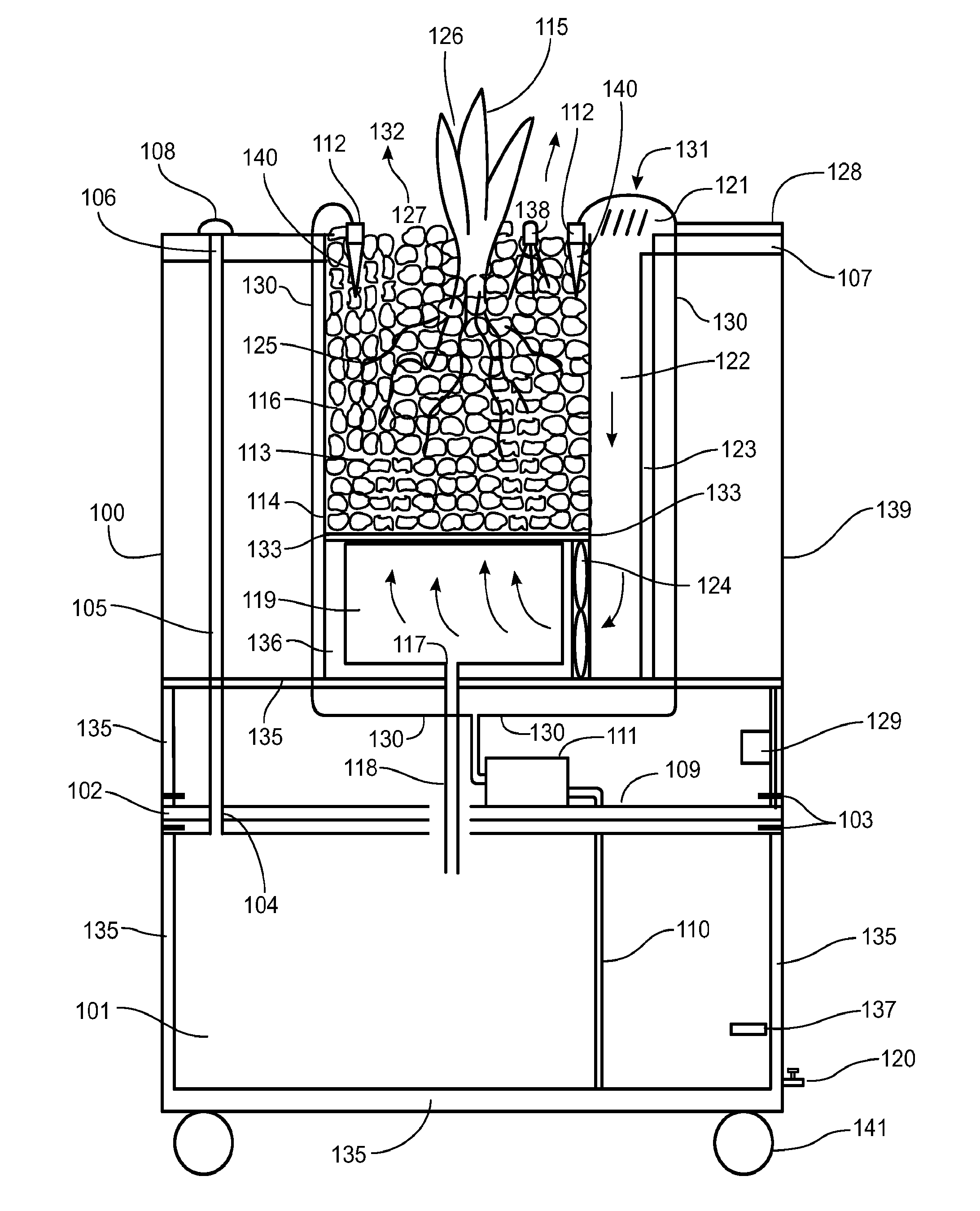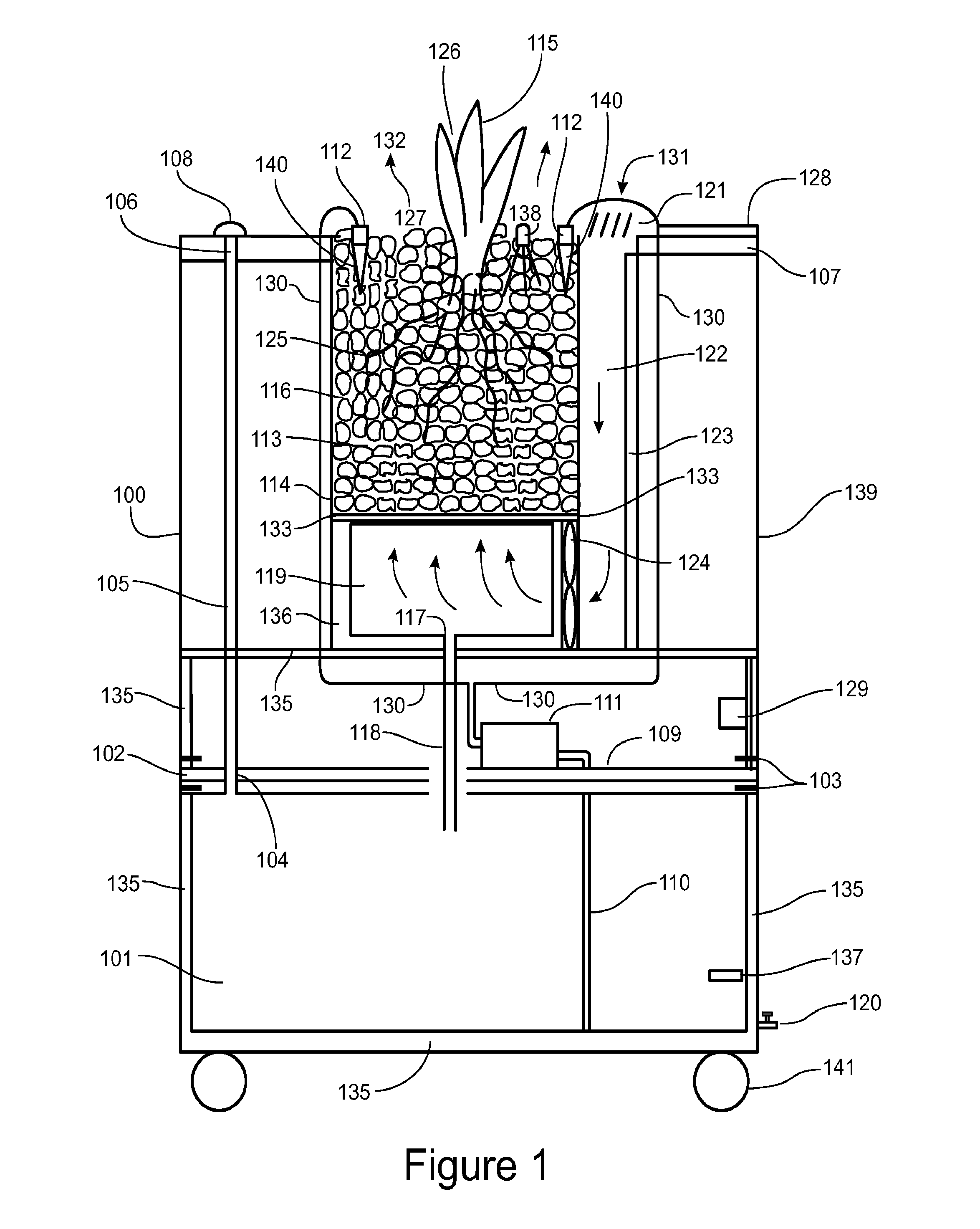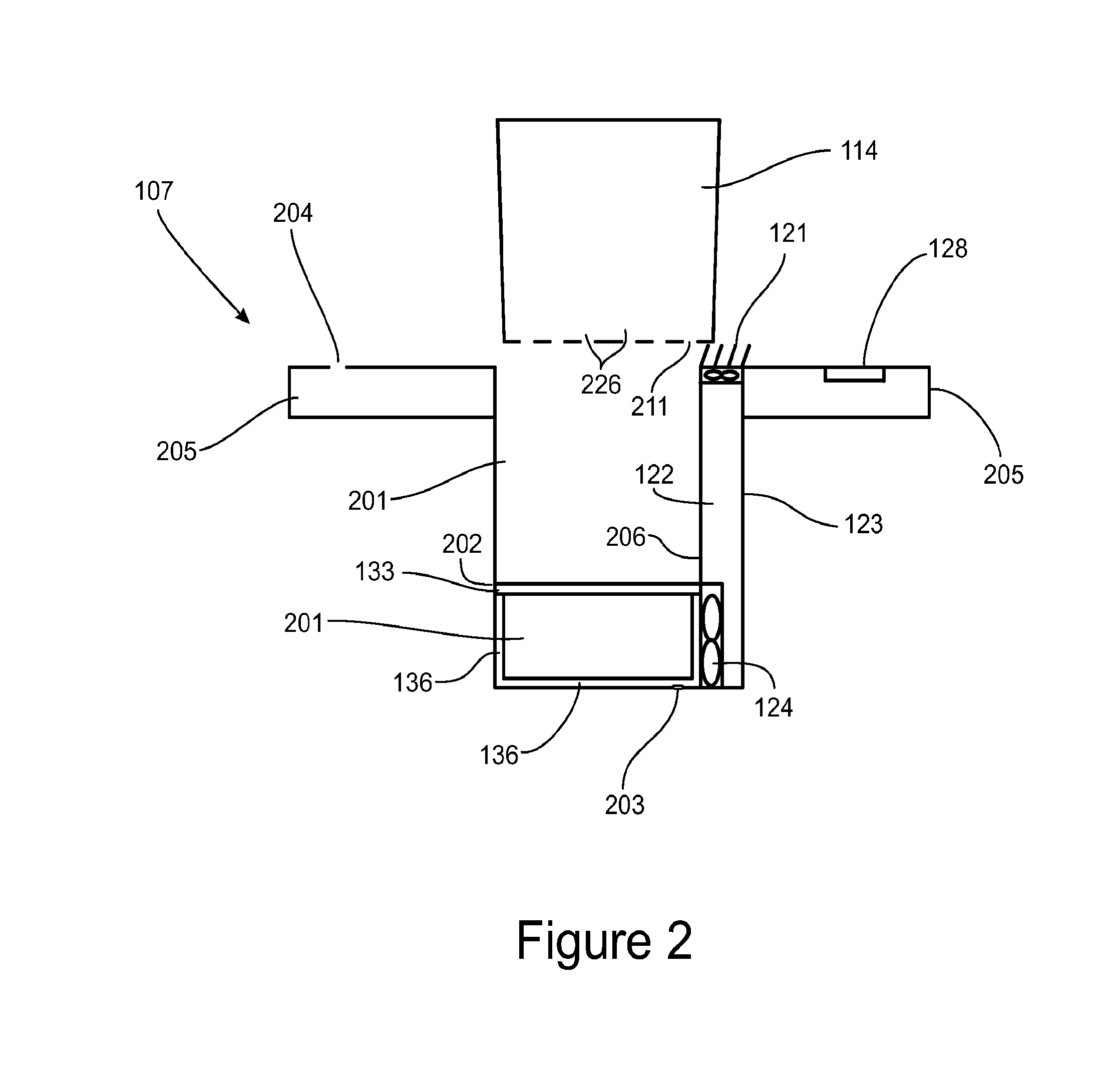Water, Light and Airflow Control System and Configuration for a Plant Air Purifier
a technology for water, light and airflow control and plant air purifier, which is applied in the direction of lighting support devices, nuclear engineering, domestic heating, etc., can solve the problems of system quickly breaking down, not being user-friendly, and not being user-friendly in the consumer and commercial marketpla
- Summary
- Abstract
- Description
- Claims
- Application Information
AI Technical Summary
Benefits of technology
Problems solved by technology
Method used
Image
Examples
Embodiment Construction
We shall now summarize several embodiments of the invention and then review the figures in more detail. Many of the details of the micro-irrigation system are already disclosed in the priority documents earlier incorporated by reference.
LED grow lights. White light products produce a lot more energy than plants can use. A typical white light product produces light wavelengths from 380 nm (UV) up to and beyond 880 nm (IR). Plants, on the other hand, primarily use light wavelengths from 400 nm (blue) to 700 nm (red). This range of light wavelengths has been labeled PAR or Photo synthetically Active Radiation. On average, nearly 82% of a traditional white light product's light energy is of little benefit to plant growth, and in most cases is harmful to plant health. In a typical HID, HPS, or MH light bulb this harmful energy is in the form of intense heat (IR) and ultraviolet radiation (UV) that cannot be seen but can certainly be felt.
Plants cast off white light for the most part. Thi...
PUM
| Property | Measurement | Unit |
|---|---|---|
| Angle | aaaaa | aaaaa |
| Time | aaaaa | aaaaa |
| Gravity | aaaaa | aaaaa |
Abstract
Description
Claims
Application Information
 Login to View More
Login to View More - R&D
- Intellectual Property
- Life Sciences
- Materials
- Tech Scout
- Unparalleled Data Quality
- Higher Quality Content
- 60% Fewer Hallucinations
Browse by: Latest US Patents, China's latest patents, Technical Efficacy Thesaurus, Application Domain, Technology Topic, Popular Technical Reports.
© 2025 PatSnap. All rights reserved.Legal|Privacy policy|Modern Slavery Act Transparency Statement|Sitemap|About US| Contact US: help@patsnap.com



